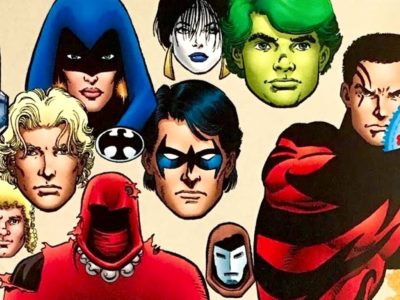
[ad_1]
Of all the Hulks, the Maestro might be the strongest there is because there’s no good influence left to limit his power.
WARNING: The following contains spoilers for Maestro: World War M, available now.
Being “the strongest one there is” is one of the attributes that define the Hulk. Deciding which of the Hulk’s many variants is the strongest Hulk there is can lead to heated fandom debates. Of all the contenders across Marvel’s multiverse, one stands out not only for his strength but how he used it to go where no other Hulk has before.
The Maestro is a Hulk variant introduced in Peter David and George Perez’s classic mini-series, The Incredible Hulk: Future Imperfect. He’s a formidable incarnation of the Hulk not just because of his strength, but because of how he used it to conquer a post-apocalyptic Earth.
The Maestro returned in Maestro: World War M #1 by David, Germán Peralta, Jesus Aburtov, Pasqual Ferry, Matt Hollingsworth, and VC’s Ariana Maher. It’s the finale of a trilogy of mini-series that tell the story of how the Hulk became the Maestro. So far, it has involved him using a combination of brains and brawn to defeat the likes of Hercules, M.O.D.O.K., and Doctor Doom. Heavy hitters like the android Human Torch, Namor, and the Abomination are also among his adversaries in World War M but it is unlikely they’ll fare any better.
Maestro’s brawn has been enhanced by his post-apocalyptic world, which was ravaged by nuclear war. By the time the 616 universe’s Hulk met him in Future Imperfect, the Maestro had already absorbed 100 years’ worth of radiation. That exposure and living through an apocalypse didn’t do much for his mental health though. The Hulk, who had Banner’s intelligence at this point, theorized that his insanity made the Maestro even stronger. The Maestro dominated their first battle. It took sending the Maestro back in time, to the detonation of the Gamma Bomb that created him, to defeat him.
When he can’t physically overpower a foe, Maestro used the kind of cunning that the Hulk isn’t known for. After he failed to overpower Hercules, the ruler of the human settlement Dystopia, he came up with a plan to take him down. He used the U-Foe Vapor to seduce and poison the demi-god. He then immediately betrayed Vapor, freezing and shattering the gaseous villainess and then scattering the pieces so she couldn’t reform.
The Maestro’s plan against Hercules illustrated a defining feature that sets him apart from other Hulks. None of his abilities are limited by Bruce Banner’s usually benevolent presence or conscience of any sort. The Maestro’s personality has completely consumed what’s left of Banner, illustrated clearly in Maestro: War and Pax #3, by David, Javier Pina, Jesus Aburtov, and VC’s Travis Lanham.
In that issue, The Maestro barged in on a therapy session between Banner and a mental projection of Doc Samson. The Maestro dismissed the idea that anyone of their allies ever actually helped them, identifying their kindness as an imposition of weakness. Instead of succumbing to the Pantheon’s attempt to neutralize him, the Maestro convinced Banner to let him take control and show the world his true, unrestrained power. That allowed him to break free of the Pantheon’s supposedly inescapable trap and ultimately return to his throne.
The question of whether Banner or the Hulk is the true monster has been at the heart of the character throughout his existence. The Maestro shows what a Hulk without any moral limits on his strength or intelligence looks like. It’s not pretty for anyone who opposes his dictatorship of Dystopia, whether they’re old enemies like Doom or allies like the Pantheon. A Hulk whose only goal is to prove that he’s the strongest one there is a terrifying thing.
About The Author
[ad_2]





